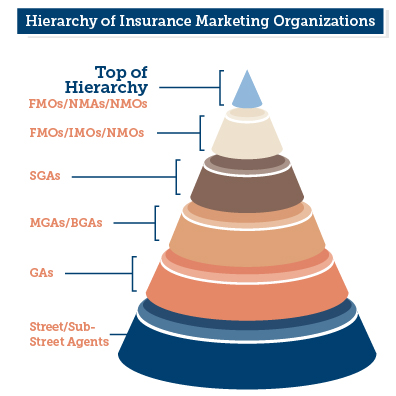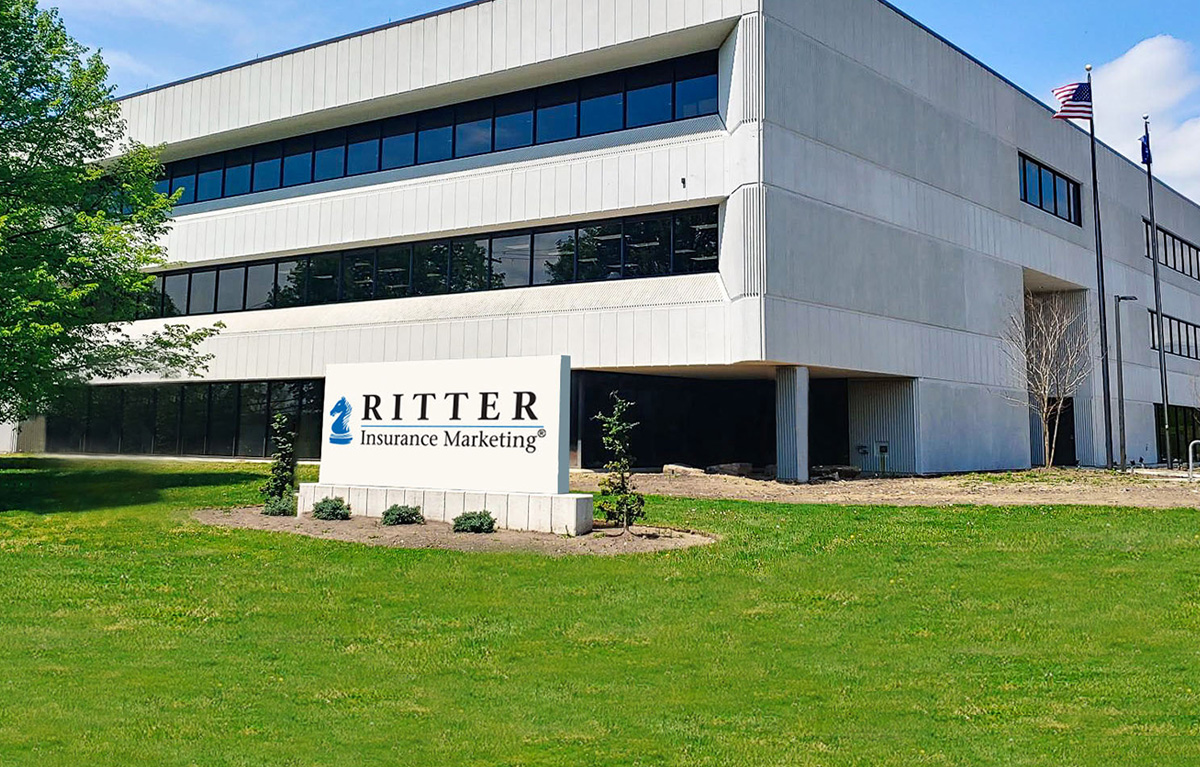The amount of acronyms in the insurance industry is astounding.
Usually what these abbreviations stand for and mean is pretty straightforward (AEP stands for Annual Enrollment Period, when people can update Medicare plans each year), but this isn’t always the case. Specifically, agents may hear and know what FMO, IMO, NMO, MGA, and GA stand for, but not know what they actually mean in regard to the business.
Listen to this article:
The five aforementioned acronyms all relate to different insurance marketing organizations that independent insurance agents can partner with to do business. Unfortunately, for new agents, there aren’t really set industry standards that establish what an insurance marketing organization is called, which can make trying to grasp what sets them apart from one another difficult. We want to do our best to provide a resource that rectifies that.
Why All the Acronyms?
You might be wondering why the industry needs all these titles and acronyms anyways. The answer typically lies in insurance carriers. Carriers want to:
- Ensure everyone is paid appropriately
- Encourage more production of their products
- Keep everything organized
To accomplish all this, carriers name and categorize. You wouldn’t ever have a job where there isn’t any order to speak of. You’ll always have entry, mid- and senior-level, and managerial employees with varying responsibilities and pay levels, working together in different departments serving different purposes. You can think of titles in the insurance industry in a similar vein.
Because there aren’t set industry standards, however, to establish what an insurance marketing organization is called, carriers end up deciding who qualifies as what. Each carrier may decide a little differently, creating different labels and standards for FMOs depending on production requirements. Carriers will also define production requirements differently or even introduce new names for certain top-producing organizations.
To learn more in depth about what those hierarchies are and what they mean for business, read our post What Are Insurance Hierarchies & How Do They Work?
All these titles for insurance marketing organizations fall into a natural hierarchy. This hierarchy tends to go, from top down, like this:

General categories; more sub-levels may exist.
Generally speaking, the higher up this ladder you go, the more the agent or entity is poised to earn in commission and/or override. But definitely don’t discount partnering with the smaller organizations for that reason alone.
For the purposes of this post, we’ll keep it broad. So generally speaking, how do FMOs, IMOs, NMOs, MGAs, and GAs differ from each other?
FMO — Field Marketing Organizations
Before we get into the differences, let’s create a baseline: a definition of a field marketing organization (FMO). This type of organization is a company acting as a liaison between an insurance carrier and agent. The FMO connects the two parties through a contract, which permits the independent agent to sell the carrier’s products. When they sell a policy, the agent earns a sales commission and the FMO earns an override, both from the carrier.
FMOs are typically top-level organizations that are licensed to sell health insurance products in most, if not all, states. They work with hundreds to thousands of agents and multiple big-name and small-name carriers all across the U.S. Almost all of an FMO’s contracts are direct with carriers, and FMOs can sometimes offer agents contracts that provide higher-than-street-level commissions.
In general, FMOs also offer agents a lot of other perks they can’t get elsewhere. For example, Ritter Insurance Marketing, the company behind the Ritter blog, is a national senior market FMO. Organizations like Ritter offer independent agents training and support (e.g., the Ritter blog and Agent Survival Guide Podcast, help with tough cases, premier technology, and other tools) to help them more easily get started in the industry and grow their businesses beyond their expectations.
While FMOs focus on health insurance products, they may also offer contracting for life insurance products or other types of ancillary insurance coverage. Agents who work with an FMO may have production requirements they have to meet to maintain their commission levels. It’s also worth noting that agents who partner with an FMO and later wish to leave the organization will have to get a release from the FMO.
For an extensive exploration of FMOs and more information about what to consider when thinking of joining an FMO, check out our free eBook How Insurance FMOs Work.
IMO — Independent Marketing Organizations
An independent marketing organization (IMO) is basically the same as an FMO. Some agents believe FMOs tend to focus more on health insurance products while IMOs tend to focus on life insurance products, but this isn’t always true. IMOs are sometimes a little smaller than FMOs and may not be able to pay agents as much in commission as some FMOs.
Like FMOS, IMOs tend to be licensed to sell multiple carrier products in multiple states. They work with hundreds to thousands of agents, and also usually offer those agents valuable training and support.
NMO — National Marketing Offices
As for national marketing offices (NMOs), FMOs and IMOs can be this type of organization. In fact, you may hear an FMO or IMO call themselves an NMO or carriers may give this designation to top-performing FMOs. There’s really nothing that sets NMOs apart from FMOs or IMOs. It’s just more of a neutral term for FMOs and IMOs that do business across the U.S., may sell both health and life products, or carriers want to set apart from other organizations.
NMA — National Marketing Alliance
You may also hear of an NMA, or National Marketing Alliance. This is another title that some carriers give to top-performing NMOs/FMOs, that, as the name implies, form a network that collaborates under a similar marketing strategy. This differs from an NMO, which is only a single entity, although both will operate on a national scale. Not all carriers recognize the NMA designation.
Besides the collaborative nature and possibly different production requirements, there’s really nothing that sets an NMA apart from an NMO/FMO/IMO. An NMA will still work with many agents across the country, providing contracts, training, and support.
SGA — Supervising General Agents
The supervising general agent (SGA) title is another carrier designation, given to some producers who fall between FMOs/IMOs and the next tier down, MGAs. An SGA partners with an upstream entity, like an FMO, and also has downline agents for whom they likely provide training and support. Again, the difference between the SGAs and the next group we’ll discuss would be a production standard set by the carrier. The SGA label is rare and only recognized by select carriers.
MGA — Managing General Agents
Like an SGA, a managing general agent (MGA) usually partners with an FMO, IMO, or NMO as a downline of these top-of-hierarchy organizations. They also have their own downline agents (potentially in the form of an agency), who they help with their businesses.
MGAs can earn more than a general agent (through a combination of commission for policies they sell themselves and overrides for policies sold by their downlines) but less than an FMO/IMO/NMO. Oftentimes, they may have to reach and maintain certain production requirements to keep their status as an MGA. These requirements can vary from one FMO, IMO, or NMO to another and even from one carrier to another.
The MGA term is more widely recognized with life agencies. To add to the alphabet soup that we’re already several spoonfuls into, some MGAs may call themselves brokerage general agencies (BGAs), which is also a common term on the life side of business. Sometimes, MGA/BGA can be a top-level contract. In fact, the MGA/BGA contract is the top contract offered by life insurance carriers.
Good MGAs/BGAs will provide their downline agents training and support, even as much as an FMO/IMO/NMO.
GA — General Agents
General agents (GAs) may contract under an FMO, IMO, NMO, or MGA. This contract typically allows them to have their own sub-agents/downlines (potentially in the form of an agency) and likely has production requirements an agent needs to meet to maintain their status as a GA.These production requirements typically aren’t as high as those for MGAs.
Like good MGAs, good GAs will provide their agents with some training and support but likely not on the same level as an FMO/IMO/NMO. Again, this is simply because they don’t have as many resources as the larger organizations (i.e., time, money, staff members, etc.).
While the line between some of the types of insurance marketing organizations out there may still be blurry, there’s a reason for that; there aren’t any set industry standards for categorizing these marketing organizations. That being said, there is a hierarchy to the different marketing organizations/entities out there.
When it comes down to it, picking a marketing organization to partner with should be like picking the bank you do business with. You want someone whom you like and trust; someone who can do their part that’s needed for both of you to succeed; and someone whom you enjoy working with. The rest doesn’t matter so much AFAWAC (as far as we are concerned).






Not affiliated with or endorsed by Medicare or any government agency.
Share Post